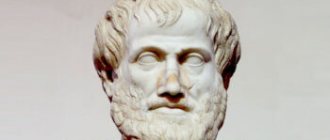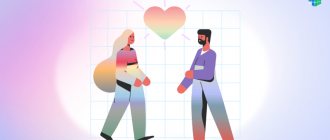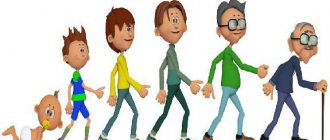A person perceives the world around him not chaotically , but trying to systematize individual phenomena and objects, formulate his own idea about them, determine how useful or dangerous what he saw or heard can be, used for a specific purpose.
In psychology, this is called perception , this is the name of the reflection in the human consciousness of surrounding objects and phenomena.
This is an active process that uses not only the senses, but also motor functions : hand position, eye movement, movement in space to improve perception.
What are kinesthetic feelings and sensations? Find out about this from our article.
Basic provisions
A white object, even in the dark, will be white. Because the person knows him that way.
The departing car, although it will shrink, will remain large in perception. Even if there is already a grain of sand in sight.
Without constancy of perception it would be difficult. Objects and people would seem something new to us. The person could simply turn in the other direction and would no longer be recognizable.
Objectivity of perception
This is the ability to perceive the world not as a set of individual elements, but as a whole.
It develops throughout life. I. Sechenov believes that its development occurs in the process of the child’s contact with objects.
Objectivity develops through motor skills:
- movement of hands and fingers when feeling objects;
- movement of the eyes when highlighting the outline of an object and “feeling” it from a distance;
- turning the head;
- other movements.
Perceptual process
Awareness of the world through the work of the senses.
Depending on which organ plays a role, they are divided into visual, auditory, olfactory and others.
The formation of a perceptual image consists of the following phases:
- Detection. The stage at which a person distinguishes an object from the background, but cannot yet reason about its characteristics.
- Discrimination. The stage at which a person can separately perceive nearby objects.
- Identification. The stage at which a person fixes properties and assigns them to a certain class.
Examples of perception
A person can perceive the world around him almost endlessly .
For example, a child who, immediately after birth, is only in a certain room or crib, and perceives the world around him within the confines of the crib, gradually exploring it and getting a complete picture of it.
Then the boundaries of its habitat expand, and the amount of information received increases . A person reads books, newspapers, watches movies and TV shows. Psychologists say that with proper vital activity, the process of self-improvement can last a lifetime.
Initially, perception is formed on the basis of certain sensations: touch, smell, visual contours of an object, its color. Then all this adds up to a certain idea of the phenomenon and the object, which is called perception.
In psychology, the process of human perception has 4 levels:
- moment of detection , our senses receive a certain signal,
- discrimination , a person determines the nature of this signal,
- identification , an attempt to determine what it is like,
- identification , the received signal belongs to one category or another.
There are several categories of perception:
- visual , a visible image of a phenomenon or object is created,
- auditory , the structure and volume of possible sounds is determined,
- perception through touch ,
- the taste sensation can also model the image.
Perception can also be voluntary or involuntary . For example, a child plays with a toy, imitating the movement of a truck, and does this quite consciously with a set goal.
Involuntary perception can be caused by blows of a special hammer under the kneecap at an appointment with a neurologist.
There are also false, erroneous types, illusions and hallucinations. But these are already elements of pathology.
Perceptual side of communication
The process in which people, through communication, perceive each other and establish contact.
A minimum of two people are involved. Ideas about the intentions, feelings, thoughts of the interlocutor and oneself are created.
People become aware of themselves and others through the following mechanisms:
- knowledge and understanding of each other;
- self-awareness in the process of communication;
- in communication, predicting the future behavior of a partner.
What is it not?
Separately, a person’s sensations are not perceptions ; only a complex of these sensations, together with their analysis, can form in the individual’s mind an idea of an object or the environment in general.
For example, when going outside, a person does not just perceive smells, sounds or outlines of buildings. He immediately evaluates the distance to this or that house, the safety of the building, its size and overall usefulness: a store in the building will be perceived differently from a sewing workshop.
The organs of hearing, vision and touch can be used to varying degrees, but the sensations they receive must complement each other .
Individual smell, color, touch of something is not considered perception in psychology, these are only its fragments.
The role of attitude in perceptual processes
Attitude affects people. When a person unconsciously reacts in a habitual way to information or people without analyzing it.
Settings are divided into 3 dimensions:
- Cognitive dimension - certain opinions, thoughts, beliefs about something or someone.
- The affective dimension is the presence of negative or positive emotions towards a person or information.
- Behavioral dimension – preparedness for behavioral reactions that correspond to a person’s beliefs.
Settings are formed:
- under the influence of others. These could be parents, the yellow press, acquaintances and friends;
- based on past experience in repeated situations.
Physiological basis
What is the psychophysiology of perception? The processes that occur during a person’s cognition of the surrounding world (this is an almost continuous process) can be recorded at the level of sensory organs , nerve fibers and the central nervous system; they are called the physiological basis of perception.
The mechanism of their action can be clearly explained as follows:
- stimuli at the nerve endings of the sense organs transmit the received information to the cerebral cortex;
- then it enters the projection zones of the brain, which are called sensory;
- a feeling of the information received and its comprehension is created.
Any “malfunction” of this chain can disrupt the integrity of perception.
For example, loss of vision , as a property of a sensory organ, limits the resulting image in terms of its color, volume, shape, etc., and a failure at the sensory level will lead to the fact that a person will perceive what he sees only as a set of light and color spots.
The nerve connections through which the process of perception works come in 2 directions:
- formed after the influence of one analyzer - for example, the noise of water in a river, which we do not yet see, affects only our hearing aid;
- inter-analyzer - figuratively speaking, they arise when we approach the river, here a whole complex of sensations comes into force, including associative ones.
The role of motivation in perceptual processes
Motivation
A reason that encourages action.
It can be guided by primitive factors. For example, hunger, cold. Or psychological needs for love, respect, recognition. Motivation plays a role in the desire for self-actualization.
For example, when feeling hungry, a person may read “lunch” instead of the word “shoes.” Carried away by ambition is a misheard phrase. An old example can be given: a person spends a long time in the desert and is tormented by thirst. After some time, he sees in the distance an oasis with clear and cool water.
Functions
During a person’s lifetime, perception performs several main functions :
- general orientation;
- assessment of the location of individual objects and phenomena;
- the cognitive function already includes the discovery of the essence of objects and phenomena, their interconnectedness;
- activity control;
- regulation of activities.
The main properties of perception include:
- objectivity - a person is aware of the object he sees as a separate body;
- integrity , - individual properties of objects necessarily (if we are talking about apperception) add up to a visual image;
- structure is not a mechanical sum of sensations, but their correlation over a period of time: when listening to music, we perceive not individual notes, but an evolving melody;
- constancy - thanks to this quality, a person perceives moving objects as constant in their form and properties;
- meaningfulness - at this stage the final formation of the image of an object and phenomenon and its place in the surrounding world occurs.
Levels
In psychology, there are 4 main levels of perception:
- sensory - it is based on the senses, it is considered to be the lowest level of perception, at which all living organisms are located, however, it also depends on the level of consciousness, since a person, say, consciously, can perform certain sensory actions;
- perceptual - the object is classified at the initial stage;
- research - examination of a particular function, aspect of an object or phenomenon;
- activity - interaction with the object under study, as for the purpose of a certain activity.
Theories
There are several scientifically based theories of perception that have their own valid arguments:
- Associative , its prominent representative was G. Helmholtz - according to this theory, the image of objects and phenomena is formed on the basis of associative sensations.
- Gestalt theory - its adherents, on the contrary, believed that we perceive each object as a separate whole, without connection with past experience and associations.
- Gibson's theory - its adherents were confident that perception cannot be objective, it depends on the degree of human activity; movement, in their opinion, is the basis of perception.
- According to Hebb's theory , perception is not an innate trait and has no innate elements at all; a person learns to understand the world gradually, first learning the details, and then the whole.
- The theory of perception by J. Piaget , who closely linked perception with the development of intelligence, is based almost on this
Modality
There are 4 sensory information perception systems (models - hence the name) that people use:
- the visual system involves the perception of color and shape, that is, what we see;
- the auditory system uses sounds, their volume, timbre, rhythm, frequency;
- the kinesthetic system perceives taste, smell, temperature;
- digital uses logical constructions.
Constancy of form
Distortions in the perception of the shape of objects can be encountered when the orientation of objects or the subject itself changes. This type is one of the important properties of the visual system, since correct recognition of the shape of objects is a necessary condition for adequate human interaction with the outside world. One of the first to identify the role of observer knowledge and signs of distance in the constancy of form was Robert Thouless.
In 1931, a psychologist conducted an experiment, the essence of which was as follows: he asked subjects to evaluate and draw or select from a certain set of squares or circles that would be similar in shape to the proposed objects lying on a horizontal surface at different distances from the observer. As a result of the experiment, the subjects chose a stimulus form that did not coincide with either the projection form or its real form, but lay between them.
Types of people
There are several types of perception:
- visual : it occurs with the dominance of what is seen;
- auditory - it is mainly based on sounds;
- discrete is based on numbers and symbols;
- There is also a more complex perception, based on other senses.
These types cannot be evenly distributed in our consciousness; for some, some are better developed, for others, others are better developed.
Accordingly, people are divided into individuals with different dominant types of perception :
- the visual person notices something faster, the words predominate in his speech: I saw, I looked, I imagined;
- the auditory person often speaks about what he heard and relies primarily on sound sensations;
- kinesthetic is emotional, constantly talking about sensations;
- Digital is based on logical constructions.
Examples
Of course, there are no people who use only one form of perception, just as there are no purely expressed types; they are often mixed. However, examples of the perception of people with one dominant personality are not difficult to identify.
Visual people value beauty in the surrounding space, do not tolerate clutter, the chaotic arrangement of things, and do not like it when the room is dirty.
The visual person makes many plans, often unrealistic, because they do not always perceive reality realistically. However, people of this type can also be generators of great ideas.
Auditory learners love sounds and, accordingly, first of all, music; they often compose it well themselves.
They have a well-developed auditory memory. They can imitate the speech of another person, sounds made by animals and even machines.
Observations show that auditory learners make good speakers and teachers.
Kinesthetics are emotional, sensitive, and changeable in mood. In interpersonal communication, they subtly sense the state of their interlocutor. When exploring an unfamiliar area and room, great importance is attached to touching and feeling.
Even touching the hand of the interlocutor is an important element of communication for them.
Digital people try to identify some kind of connection and pattern in everything they see and hear. They are prone to lengthy and very careful analysis of perceived phenomena.
Psychologists note that it is people of this type who, in stressful situations, are better than those around them in maintaining self-control and finding a way out of the current situation.
Definition
The word “mediate” is a verb that denotes performing an action not directly, but through an intermediary, obtaining a result by transferring a function from one object to another. It can be anything: an object, an action, knowledge, a person, etc. The object receives a result without performing a direct action for this - indirectly.
The opposite in meaning concept is directly. That is, you can find out what time it is (directly) by looking at your watch or (indirectly) by asking someone.
We receive information about the environment through the skin (temperature, humidity, material characteristics, etc.), eyes (light, color, movement, etc.), ears (loudness, vibrations, etc.). But this perception itself is considered direct because it gives us answers directly. He put his hand under the stream of water and determined whether it was wet or cold, wiped it with a towel - it was warm and dry, and the towel itself was soft and fluffy. The power of our vision is not enough to see distant stars and planets - we take a telescope as an intermediary and study them indirectly.









